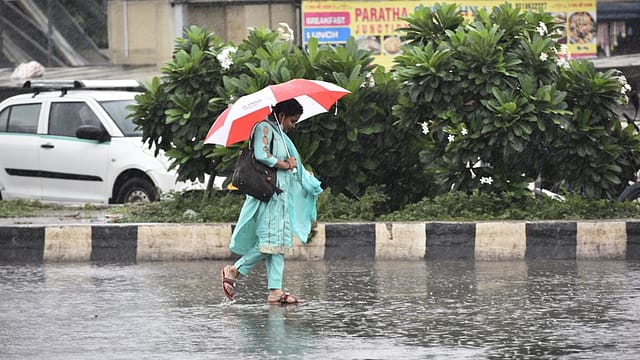IMD forecasts southwest monsoon to be normal in 2022
ADVERTISEMENT

Southwest monsoon rainfall over the country is likely to be normal this year, the India Meteorological Department (IMD) said on Thursday. The monsoon seasonal rainfall from June to September is likely to be 99% of the long period average (LPA) with a margin of error of 5%, the weather department said. The long period average for a 'normal' monsoon is pegged between 96% and 104%.
IMD has changed the benchmark for "normal" rainfall for the southwest monsoon season to 87 cm, which is based on data of 1971-2020. Earlier, it used to consider the LPA of 88 cm of the 1961-2010 period. There is a decrease of 12 mm in mean rainfall during southwest monsoon season and 16.8 mm in annual rainfall for the country from 1961-2010 to 1971-2020.
A normal monsoon may lead to higher agriculture yield, easing pressure on food prices and the overall retail inflation, which saw a sharp rise to 6.95% in March compared to 6.07% in February.
The southwest monsoon is critical for agriculture in the country since nearly 60% of India's net arable land lacks irrigation. During the southwest monsoon season (June-September), India receives about 868.6 mm rainfall which is about 75% of the annual rainfall (1,160.1mm). It determines the yield of several grains and pulses, including rice, wheat, and sugarcane. The rains are also crucial to keep up the rural demand.
January 2026
Netflix, which has been in India for a decade, has successfully struck a balance between high-class premium content and pricing that attracts a range of customers. Find out how the U.S. streaming giant evolved in India, plus an exclusive interview with CEO Ted Sarandos. Also read about the Best Investments for 2026, and how rising growth and easing inflation will come in handy for finance minister Nirmala Sitharaman as she prepares Budget 2026.
Currently, La Niña conditions are prevailing over the equatorial Pacific region, IMD said, adding that the latest Monsoon Mission Climate Forecast System (MMCFS) as well as other climate model forecast indicates that La Niña conditions are likely to continue during the monsoon season.
"Neutral Indian Ocean Dipole (IOD) conditions are present over the Indian Ocean and the latest forecast indicates that the neutral IOD conditions are likely to continue until the beginning of the southwest monsoon season. Thereafter, enhanced probability for negative IOD condition is predicted," the met department said.
As sea surface temperature (SST) conditions over the Pacific and the Indian Oceans are known to have a strong influence on the Indian monsoon. IMD said it is monitoring the evolution of sea surface conditions over these ocean basins.
While Gujarat receives 96% of its annual rainfall during the southwest monsoon season, Tamil Nadu receives only 36% of its annual rainfall during this period. The southern state receives 48% of annual rainfall in the northeast monsoon season (October-December).
All-India pre-monsoon season (March-May) rainfall and post-monsoon season rainfall contribute around 11% and 10% respectively to the annual rainfall in the country.
IMD will issue the updated forecasts for monsoon season rainfall in the last week of May. Forecasts for monsoon season (June-September) rainfall for four geographical regions, monsoon core zone and forecast for the month of June also will be issued.
In February, private weather forecaster Skymet predicted the upcoming monsoon to be "normal".
